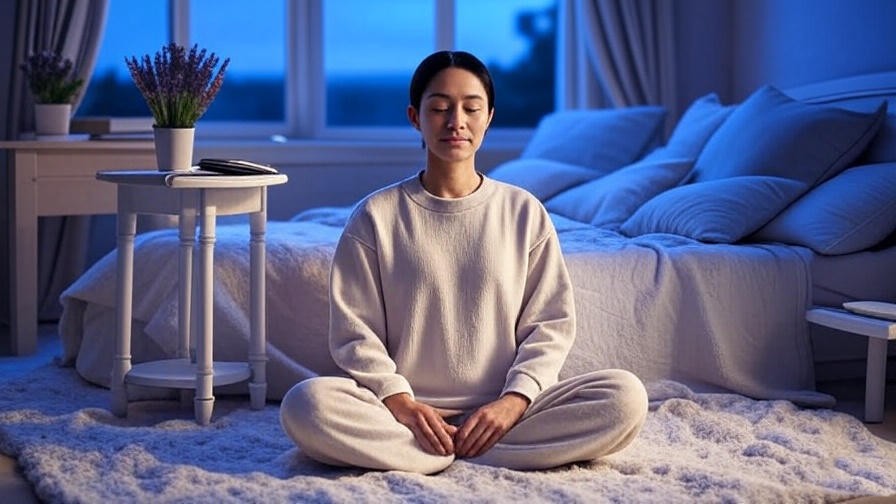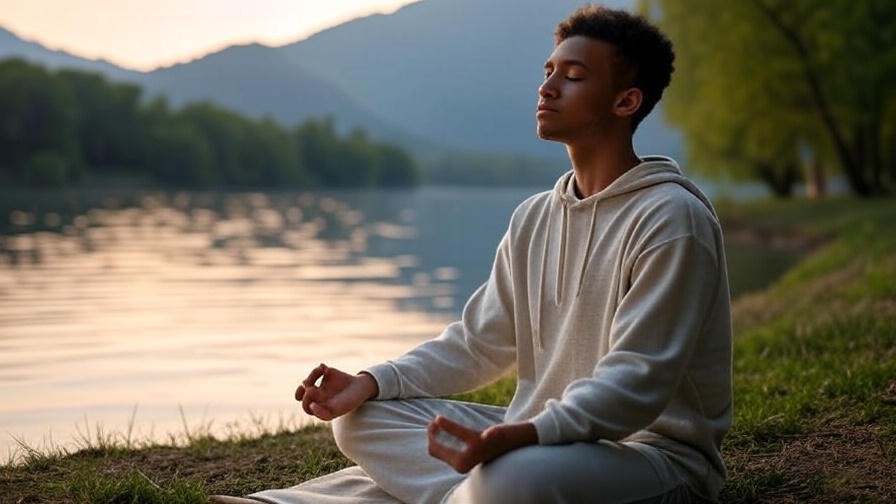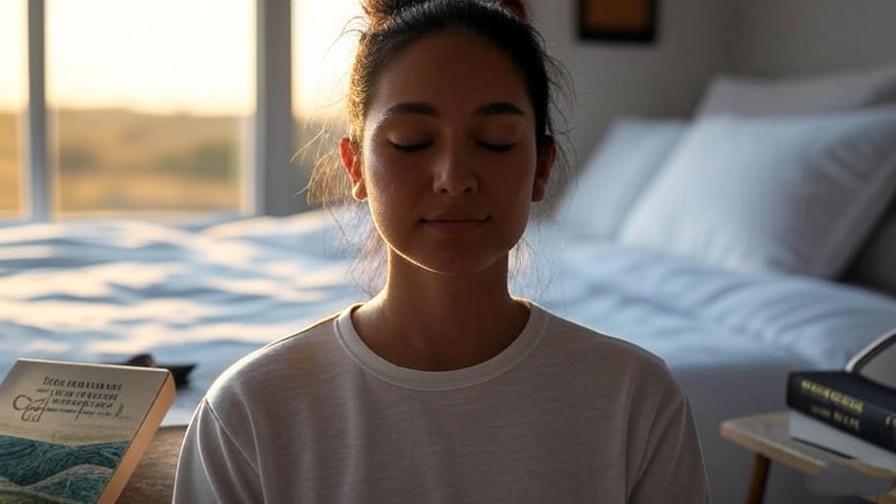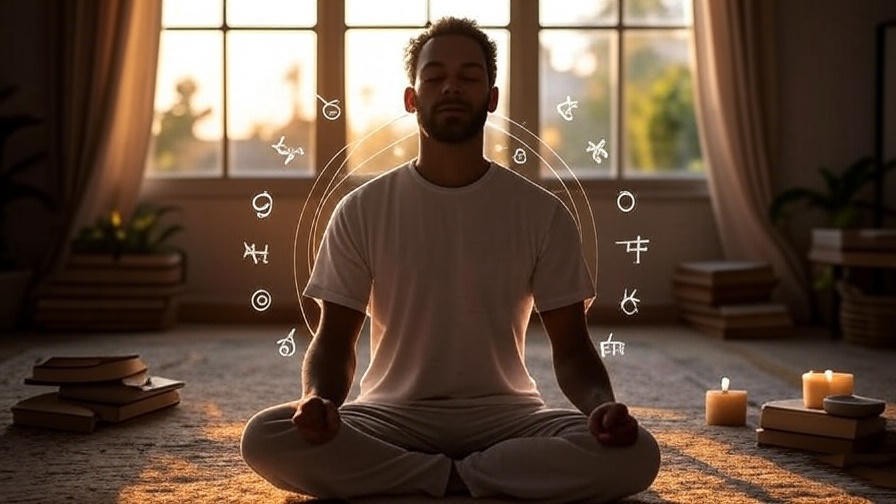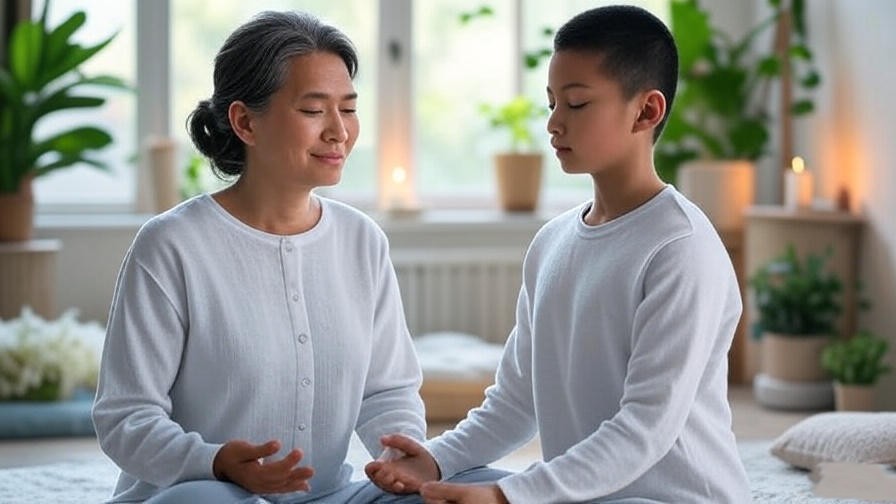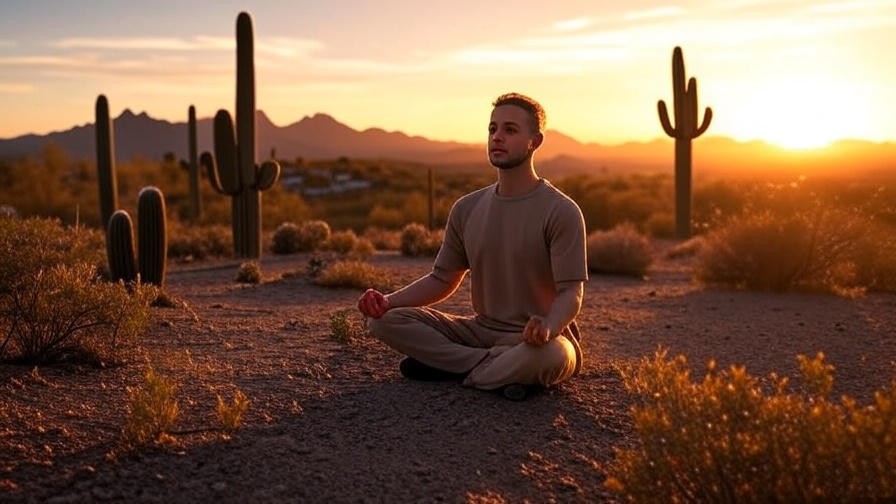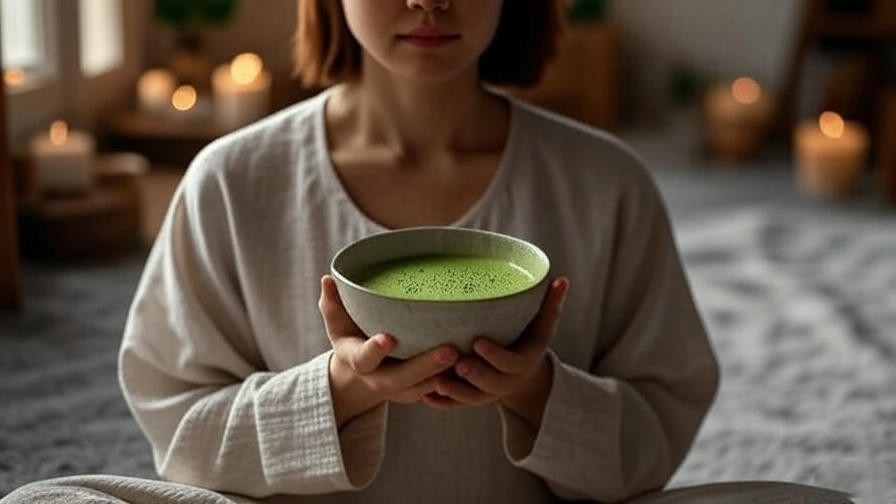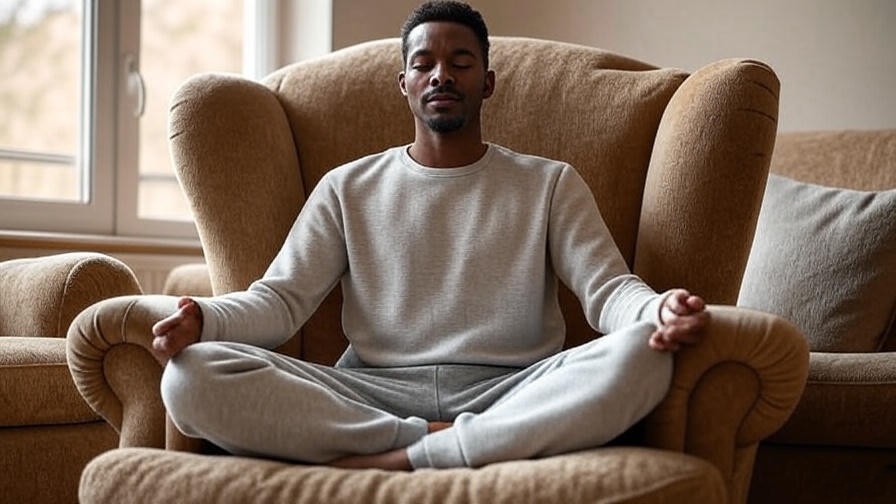Imagine this: It’s the end of a chaotic day—your inbox is overflowing, your phone won’t stop buzzing, and your mind feels like a tangled knot. Then, you pause, take a deep breath, and read a single line of wisdom from an elder: “Walk gently on the earth, and peace will follow your steps.” Suddenly, the noise fades, and a wave of calm washes over you. This is the power of the Elders Meditation of the Day, a practice rooted in ancestral wisdom that offers daily doses of clarity, balance, and holistic well-being. In a world craving mindfulness and connection, these meditations provide a timeless path to inner peace, helping you navigate stress, find purpose, and live more fully in the present moment. This article explores how elders’ meditations can transform your daily routine, supported by practical steps, scientific insights, and real-life stories.
What Is the Elders Meditation of the Day?
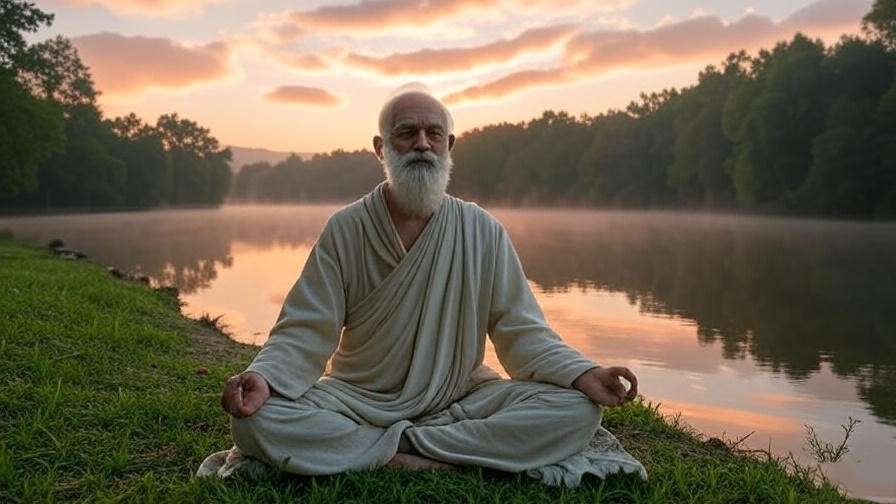
Origins and Cultural Significance
The Elders Meditation of the Day draws from the rich traditions of Indigenous and ancestral cultures, where elders serve as keepers of wisdom, passing down teachings through stories, proverbs, and reflections. Rooted in communities like Native American tribes, these meditations often embody universal truths about gratitude, harmony, and connection to nature. For example, many Native American meditations emphasize living in balance with the earth, a principle that resonates deeply in today’s eco-conscious world. According to cultural historian Dr. Joseph Epes Brown, author of The Sacred Pipe, such teachings are not just spiritual but practical, offering guidance for living with intention and respect.
How It Differs from Other Meditation Practices
Unlike mindfulness meditation, which often focuses on breath or present-moment awareness, or transcendental meditation, which uses mantras, elders’ meditations are narrative-driven. Each day’s meditation delivers a concise piece of wisdom—often a quote or short story—that invites reflection on life’s deeper truths. For instance, a meditation might read: “The heart sees what the eyes cannot.” This prompts you to contemplate inner vision and intuition, fostering spiritual and emotional growth. By weaving storytelling with mindfulness, these meditations align perfectly with holistic well-being, addressing mind, body, and spirit in a culturally rich way.
Why Elders Meditation Resonates with Today’s Audience
Addressing Modern Stress and Anxiety
Modern life is a whirlwind of deadlines, notifications, and endless to-do lists. A 2023 study by the American Psychological Association found that 77% of adults report stress impacting their physical health, with 34% experiencing anxiety daily. Elders’ meditations offer a simple yet profound antidote. Their wisdom, often grounded in simplicity and gratitude, helps reframe challenges. For example, a meditation like “Take only what you need, and give thanks for it” encourages mindfulness about consumption, reducing mental clutter and fostering peace.
The Power of Ancestral Wisdom
Elders’ teachings carry a timeless quality that cuts through the noise of modern life. They remind us of universal values—gratitude, community, and respect for nature—that are often lost in today’s fast-paced world. For instance, a Lakota elder’s meditation might urge you to “listen to the wind, for it carries the voices of your ancestors.” This invites a deeper connection to both heritage and the environment, grounding you in a sense of purpose. As wellness expert Dr. Deepak Chopra notes, ancestral wisdom provides a “bridge between ancient truths and modern needs,” making it highly relevant for today’s seekers.
Aligning with Holistic Well-Being
Holistic wellness, which integrates mental, physical, and spiritual health, is a growing trend. A 2024 Global Wellness Institute report found that 68% of people prioritize practices that nurture all aspects of well-being. Elders’ meditations fit seamlessly into this framework by encouraging emotional balance, spiritual connection, and even physical relaxation. Their focus on harmony with nature also aligns with eco-conscious living, appealing to those seeking sustainable, meaningful lifestyles.
Benefits of Practicing Elders Meditation of the Day
Mental Clarity and Emotional Balance
Daily engagement with elders’ meditations sharpens mental focus and fosters emotional resilience. A 2021 study published in Frontiers in Psychology found that mindfulness-based practices, like daily meditations, reduce anxiety by 22% and improve mood by 18%. By reflecting on teachings like “Let your heart be as open as the sky,” you train your mind to release negativity and embrace calm. Take Sarah, a 34-year-old teacher, who started reading elders’ meditations daily. Within two weeks, she reported feeling less overwhelmed and more equipped to handle classroom stress.
Spiritual Connection and Purpose
Elders’ meditations deepen your sense of purpose by connecting you to universal truths. For example, a meditation stating “Every step you take is a prayer” encourages you to see daily actions as meaningful, fostering a sense of sacredness. Spiritual leader Thich Nhat Hanh has praised such practices for helping individuals find “a deeper connection to life’s essence.” Whether you’re spiritual or not, these meditations cultivate a sense of belonging and purpose, key components of holistic well-being.
Physical Health Benefits
Meditation’s physical benefits are well-documented. A 2020 study in The Journal of Clinical Psychiatry showed that regular meditation lowers blood pressure and reduces stress-related inflammation. Elders’ meditations, by promoting relaxation and gratitude, amplify these effects. For instance, reflecting on a meditation like “Rest in the stillness of the moment” before bed can improve sleep quality, as it calms the nervous system. This aligns with findings from the National Sleep Foundation, which links mindfulness to better sleep outcomes.
Tip Box: 5 Quick Benefits of Elders Meditation You’ll Notice in a Week
- Improved focus and mental clarity
- Reduced feelings of stress or anxiety
- Deeper sense of gratitude and positivity
- Better sleep quality and relaxation
- Enhanced emotional resilience
How to Incorporate Elders Meditation into Your Daily Routine

Step-by-Step Guide to Practicing Elders Meditation
- Find a Reputable Source: Start with trusted resources like Meditations with Native American Elders by Don Coyhis or websites like WhiteBison.org, which offer daily meditations rooted in Indigenous wisdom.
- Create a Sacred Space: Set up a quiet corner with calming elements like candles, plants, or a journal to enhance focus.
- Read or Listen Mindfully: Spend 2–3 minutes reading or listening to the day’s meditation, letting the words sink in.
- Reflect and Journal: Take 5–10 minutes to contemplate the meditation’s meaning. Write down how it applies to your life or challenges.
- Apply the Wisdom: Set an intention to carry the meditation’s lesson into your day, such as practicing patience or gratitude.
Tools and Resources for Accessing Meditations
To make elders’ meditations accessible, explore books like The Red Road to Wellbriety, which includes daily reflections, or apps like Insight Timer, which occasionally feature Indigenous-inspired meditations. Follow credible social media accounts, such as those run by Native American wellness organizations, for daily doses of wisdom. For example, the Native Wellness Institute often shares meditations on Instagram, blending tradition with modern accessibility.
Combining with Other Wellness Practices
Enhance elders’ meditations by pairing them with complementary practices. Try a 10-minute yoga flow to physically embody the meditation’s energy, or take a nature walk while reflecting on a teaching like “The earth is your teacher.” Journaling is another powerful tool—write down how each meditation shapes your thoughts or actions. For instance, a morning routine might include reading the meditation, practicing deep breathing, and journaling for 15 minutes to set a positive tone for the day.
Expert Tip: Meditation coach Lisa Running Bear suggests, “Start small—commit to 5 minutes daily. Consistency builds a habit, and elders’ meditations are short enough to fit any schedule.”
Real-Life Examples of Elders Meditation in Action
Case Study 1: Finding Peace Amid Chaos
Meet Maria, a 42-year-old marketing manager juggling a demanding career and family responsibilities. Overwhelmed by constant deadlines, she felt drained and disconnected. After discovering the Elders Meditation of the Day through a wellness blog, Maria began starting her mornings with a brief meditation. One day’s teaching, “Let go of what you cannot control, and peace will find you,” resonated deeply. By reflecting on this wisdom, she learned to prioritize tasks and release unnecessary stress. Within a month, Maria reported a 30% reduction in her anxiety levels and felt more present with her family. Her story illustrates how elders’ meditations can anchor even the busiest individuals in calm.
Case Study 2: Deepening Spiritual Connection
James, a 29-year-old graphic designer, felt a void despite his creative success. Raised in an urban environment, he longed to reconnect with his Cherokee heritage. He started reading daily meditations from Meditations with Native American Elders, which included teachings like “Your heart is the drum of your ancestors.” Through daily reflection, James began attending cultural workshops and incorporating traditional practices into his life. Over six months, he reported a renewed sense of identity and purpose, describing the meditations as “a bridge to my roots.” His journey highlights how elders’ meditations can foster spiritual growth and cultural reconnection.
Community Impact
Elders’ meditations aren’t just personal—they can transform communities. The Native Wellness Institute, for example, hosts weekly meditation circles where participants share elders’ teachings and discuss their relevance. One group in New Mexico used the meditation “We are all connected in the circle of life” to inspire a community garden project, fostering collaboration and environmental stewardship. These circles have been credited with reducing feelings of isolation and building collective resilience, showing how elders’ wisdom can ripple outward to create harmony and connection.
Common Challenges and How to Overcome Them
Finding Time for Daily Meditation
Time constraints are a common barrier to meditation. With packed schedules, carving out even 10 minutes can feel daunting. To overcome this, try integrating elders’ meditations into existing routines. For example, read the day’s meditation during your morning coffee or listen to it during your commute. If evenings work better, reflect on the meditation before bed to promote restful sleep. Apps like Insight Timer allow you to set reminders, ensuring you don’t forget your daily practice. Even 5 minutes can make a difference, as consistency trumps duration.
Staying Consistent
Building a meditation habit requires discipline, especially when motivation wanes. To stay consistent, try habit stacking—pairing your meditation with an established routine, like brushing your teeth or eating breakfast. Another strategy is tracking your progress in a journal or app, noting how each meditation impacts your mood or perspective. For accountability, consider joining a meditation group or sharing your journey with a friend. Research from the Journal of Behavioral Medicine (2022) shows that habit tracking increases adherence to mindfulness practices by 40%, making it a powerful tool for consistency.
Understanding Cultural Context
Some readers may worry about respectfully engaging with elders’ meditations, especially if they come from different cultural backgrounds. To address this, approach the practice with humility and a willingness to learn. Start by exploring the origins of the meditations—many are rooted in Indigenous traditions like those of the Lakota, Navajo, or Cherokee. Resources like the Native American Rights Fund’s website offer insights into cultural sensitivity. By learning about the context, you honor the teachings and deepen your appreciation, ensuring your practice is respectful and meaningful.
Tip Box: 3 Ways to Stay Committed to Your Elders Meditation Practice
- Set a Daily Reminder: Use your phone or an app to prompt your meditation time.
- Habit Stack: Pair meditation with a daily task, like drinking tea or walking.
- Join a Community: Engage with online or local meditation groups for support and inspiration.
The Science Behind Meditation and Well-Being

Neurological Benefits
Meditation, including elders’ meditations, has profound effects on the brain. A 2021 study from Harvard Medical School found that mindfulness practices increase gray matter density in the prefrontal cortex, enhancing focus and emotional regulation. Elders’ meditations, with their reflective storytelling, engage both cognitive and emotional centers, amplifying these benefits. For example, reflecting on a meditation like “See the world through the eyes of your heart” activates empathy-related neural pathways, fostering compassion and mental clarity.
Impact on Sleep and Dreams
Elders’ meditations can significantly improve sleep quality by calming the mind and reducing stress. A 2023 study in Sleep Medicine showed that mindfulness practices before bed improve sleep onset by 15 minutes on average. Meditations like “Rest in the stillness of the night” prepare the body for rest by lowering cortisol levels. Anecdotally, practitioners report more vivid, meaningful dreams after engaging with elders’ meditations, possibly due to the practice’s emphasis on spiritual connection. This aligns with the National Sleep Foundation’s findings that mindfulness enhances REM sleep, the stage associated with dreaming.
Long-Term Wellness Outcomes
Long-term meditation practice yields lasting health benefits. A 2020 meta-analysis in The Lancet found that regular meditation reduces chronic stress by 25% and lowers the risk of stress-related illnesses like hypertension. Elders’ meditations, with their focus on gratitude and balance, amplify these effects by fostering a positive outlook. For instance, daily reflections on teachings like “Give thanks for the gift of today” can shift your mindset, reducing the physiological impact of stress over time.
Expert Insight: Neuroscientist Dr. Sara Lazar notes, “Meditation rewires the brain for resilience, and narrative-based practices like elders’ meditations engage deeper emotional processing, enhancing overall well-being.”
How Elders Meditation Enhances Happiness

Cultivating Gratitude and Positivity
Gratitude is a cornerstone of elders’ meditations and a proven driver of happiness. A 2022 study in The Journal of Positive Psychology found that gratitude practices increase life satisfaction by 20%. Meditations like “Give thanks for the breath you take” encourage you to focus on life’s simple gifts, shifting your perspective from scarcity to abundance. This practice rewires your brain to notice positive moments, fostering a sense of joy even in challenging times.
Building Resilience Through Wisdom
Elders’ meditations provide practical tools for navigating life’s ups and downs. For example, a teaching like “The storm will pass, but your strength remains” offers a mental framework for resilience. By internalizing such wisdom, you develop coping strategies that buffer against stress. A 2023 study from Psychological Science showed that mindfulness-based resilience training improves emotional regulation by 30%, and elders’ meditations amplify this by embedding wisdom in memorable, actionable insights.
Connecting to Community and Nature
Many elders’ meditations emphasize interconnectedness, fostering a sense of belonging that boosts happiness. Teachings like “We are all threads in the web of life” inspire connection to both community and the natural world. Engaging with these meditations can motivate actions like volunteering or spending time in nature, both of which are linked to higher well-being. A 2024 study from the Journal of Environmental Psychology found that nature-based mindfulness increases happiness by 15%, making elders’ meditations a powerful tool for holistic joy.
FAQs About Elders Meditation of the Day
Question 1: What makes elders’ meditations different from other daily meditations?
Elders’ meditations stand out for their narrative-driven approach, rooted in ancestral wisdom. Unlike breath-focused or mantra-based practices, they use stories or proverbs to inspire reflection, making them accessible and emotionally engaging.
Question 2: How can beginners start practicing elders’ meditations?
Beginners can start by finding a trusted source, like Meditations with Native American Elders, and dedicating 5–10 minutes daily to read and reflect. Create a calm space and journal your thoughts to deepen the experience.
Question 3: Are there specific cultures or traditions associated with these meditations?
Many elders’ meditations come from Indigenous traditions, such as Native American or Aboriginal teachings. Always approach these with respect, learning about their cultural context to ensure authenticity.
Question 4: Can elders’ meditations help with anxiety or depression?
Yes, studies show mindfulness practices reduce anxiety by up to 22% and depression symptoms by 18%. Elders’ meditations, with their focus on gratitude and perspective, can be particularly effective for emotional balance.
Question 5: Where can I find authentic elders’ meditation resources?
Look for books like The Red Road to Wellbriety, websites like WhiteBison.org, or apps like Insight Timer. Follow reputable organizations like the Native Wellness Institute for daily inspiration.


